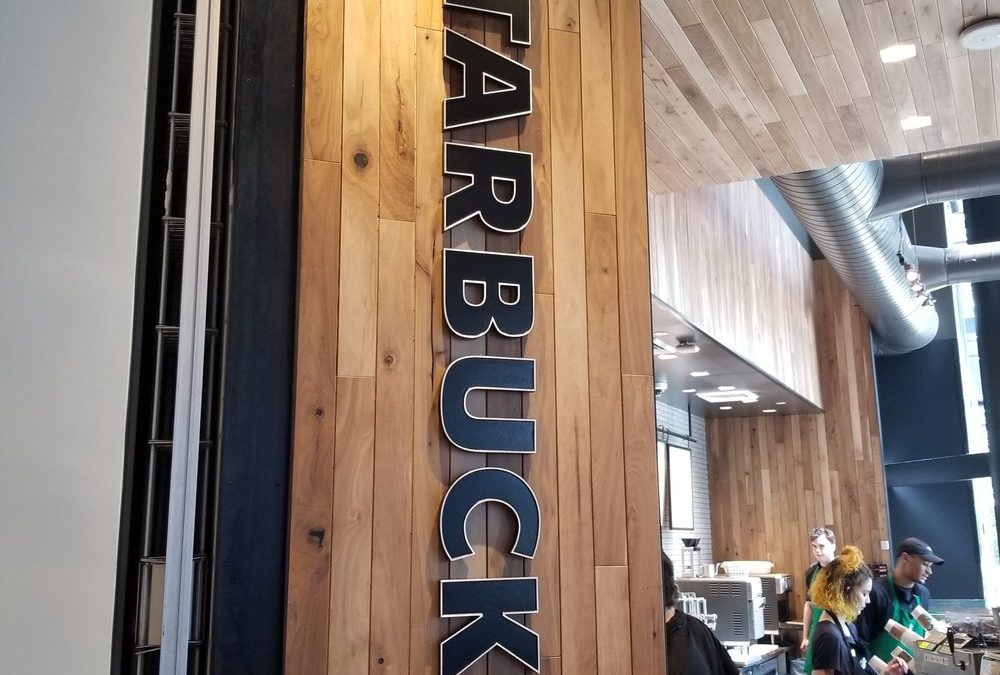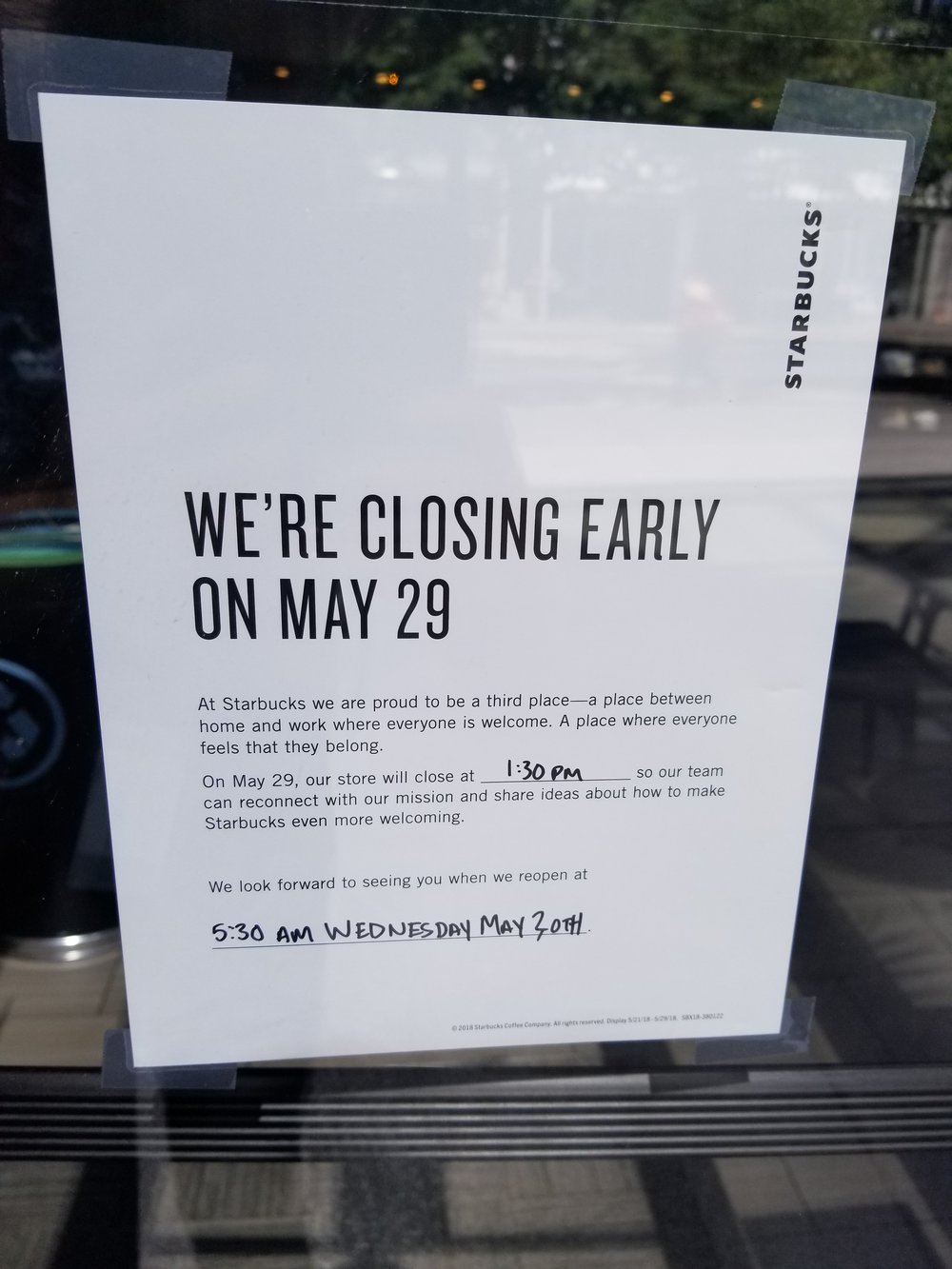On April 12, 2018, two black men were arrested at Starbucks in Philadelphia. They were seated, waited for a friend to arrive. They hadn’t ordered anything. After this incident, Starbucks CEO Kevin Johnson apologized, deeply concerned about the training and practices that lead to this outcome.
So much has happened since April 12th. Since then, Starbucks has provided guidance to stores on how to address disruptive customer behaviors. I had a conversation with an official Starbucks spokesperson and learned a little more about what Starbucks considers to be ‘disruptive’ behavior. The things that are ‘disruptive’ are fairly blatant unwanted behaviors. Just sitting inside a store at a table is not ‘disruptive’. Starbucks asks their partners (Starbucks calls their employees “partners”) to assess the behavior and not the person.
Things like obscene language, sleeping inside the store, personal hygiene that disrupts others’ experiences, panhandling, shoplifting, and misuse of the restrooms are all examples of unwanted behaviors at a Starbucks. (For the record, I think I have briefly fallen asleep in Starbucks stores before. It’s possible. You just didn’t get enough sleep for any reason or had been traveling and then you plop into a comfy chair and it’s an invitation to sleep…).
All of this, at its core, is Starbucks reconnecting to its Third Place history. The Third Place concept is the idea of a safe gathering spot for customers and community, which is not your home nor your work. In Pour Your Heart Into It, Howard Schultz wrote, “In some communities, Starbucks stores have become a Third Place – a comfortable, sociable gathering spot away from home and work, like an extension of the front porch. People connect with Starbucks because they relate to what we stand for. It’s more than great coffee. It’s the romance of the coffee experience, the feeling of warmth and community people get in Starbucks stores.” (See page 5, Pour Your Heart Into It.)
One store mishandled, one customer mishandled, damages the safe, community gathering spot of Starbucks stores.
Last week, Starbucks released some of the curriculum of the May 29th closure and training program.
So on May 29, 2018, your local Starbucks store might be closed early. (Licensed Starbucks locations are not closing on May 29, 2018). It’s a training on implicit bias. It’s also about restoring the Third Place at Starbucks.
It’s your turn to weigh in. (The “We’re Closing Early” sign below is from the 3rd and Madison Starbucks in downtown Seattle).
Related posts
3 Comments
Leave a Reply Cancel reply
You must be logged in to post a comment.
Sponsors
Recent Comments
- DEVIN on Compostable Straws Land in Seattle Starbucks Stores
- coffeebeanz on Why do you go to Starbucks less often? (If that’s true for you)
- Willi on You can now buy a Siren statue: $6,000
- Willi on A major revamp of your drink recipe: Testing syrup extracts and cane sugar
- Skip on Why do you go to Starbucks less often? (If that’s true for you)








I don’t “feel welcome” at a business that encourages thugs, drug dealers, and vagrants to hang out in the lobby and the restrooms all in the name of Political Correctness.
I feel sorry for the SBUX associates who have to sit through this “training” and be told that they are racist, sexist, homophobic, etc just to make radical alt-left groups happy.
Today’s news can’t be good:
https://www.cnbc.com/2018/06/20/starbuck-ceo-johnson-says-aiming-for-growth-at-scale-needs-to-be-more-disciplined.html
https://www.bloomberg.com/view/articles/2018-06-20/starbucks-investor-update-delivers-the-wrong-kind-of-jolt
Looks like going all-in on Frappuccinos the last few years (and oversaturating Seattle and NYC while ignoring other places) has finally come back to haunt them…
My main worry is, with Schultz out, will this also mean the end of the Reserve program? No more 1000 new Reserve Bars? I’ve said it before and I’ll say it again, if they take Reserves out of Toronto they will lose me as a customer for good.
I think the situation in Philadelphia was never clearly explained. There is a missing link where the two men were asked to leave, and they refused. How is it Starbucks’ fault by exercising their right to private property when dealing with trespassers? What caused the employees to ask these men to leave? There is something missing here.